Media | Articles
Heavyweight Hauler: The Flash Cadillac has spent four-plus decades flattening drag strips
In the early Seventies, a Cadillac dealership might have seemed a bit of a humdrum place to work for a young tech with hot-rodding heating up his blood. At that point in the brand’s history, its connections to racing and performance were either two decades behind it (Le Mans, La Carrera Panamericana, Cadillac-powered Allards) or three decades into the future with the “V” models and SCCA World Challenge. In 1971, Cadillac was 100 percent dedicated to offering 5000 pounds of soothing living room comfort on wheels.
It was in a New Mexico Cadillac dealership in 1971, though, that Courtney Hines began incubating an idea that would ultimately manifest in a 4600-pound, full-body Coupe de Ville that ran 9.7 seconds in the quarter-mile … all on the motor. That motor was (and still is) the “8.2 Litre,” which was Cadillac’s pseudo-European badge for the 500 cu-in V-8 made for 1970–1976.
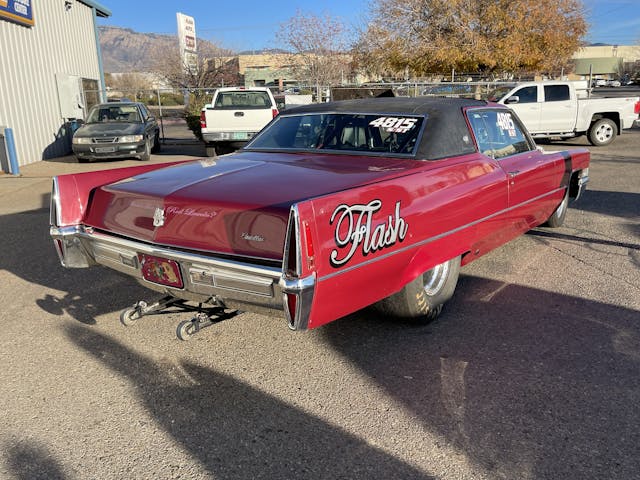
Hines named the car “Flash Cadillac.” It was a timely allusion to Flash Cadillac and the Continental Kids, a then-new band that played oldies and Fifties-style originals. (The band appeared in 1973’s American Graffiti as Herby and the Heartbeats.)
As if running high nines in an American luxo-tank wasn’t staggering enough, Hines is now aiming to take “Flash” deep into the eights with a twin-turbo 8.2-litre. The motor is one that Hines’ CAD Company had built for the Spectre Speedliner, which became the first wheel-driven, gasoline-fueled car to exceed 400 mph when it hit 415 mph at Bonneville in 2010.
When Hines spoke with Hagerty in late 2021, he said he had installed a new transmission in the Flash and was dialing in the boost controllers. In an earlier test run, the big red Caddy ran low nines, accelerating only for the first eighth-mile before blowing the transmission. He is hoping to do some full quarter-mile tests this year.
Marketplace
Buy and sell classics with confidence
So how did this mechanical madness start?
Cadillac ranch
Like many seemingly unusual drag race combinations, the Flash Cadillac started as a “What if?” mulled over many bull sessions between friends. Hines and fellow Caddy wrench Marty Dike had been discussing the potential of the Cadillac V-8 that debuted as a 472-incher in 1968. The engine grew to 500 cubes with a bore job for the 1970 Eldorado.
“I was working on these cars all the time, and I began realizing some things about the Caddy engine that were beneficial for performance,” Hines recalls.
Firstly, of course, there were lots of cubes, which exceeded rivals Lincoln (460 cu-in) and Chrysler Imperial (440 cu-in). Along with the big cubes came plenty of room. “Everything was on five-inch centers,” explains Hines, concerning the Cadillac 8.2 Litre. “There were no siamesed ports. Everything was spaced out properly.”
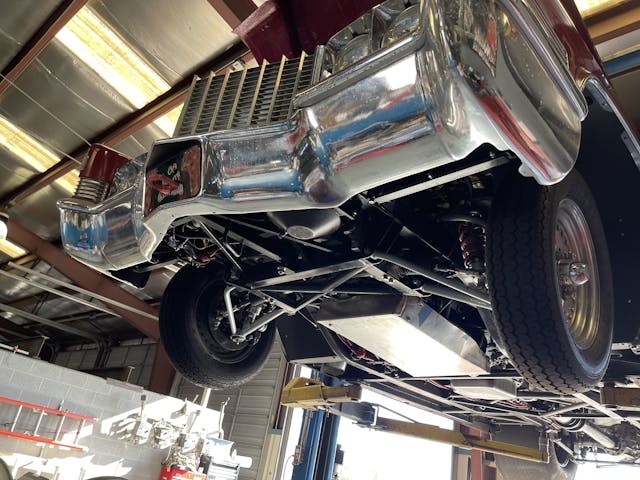
He saw other elements he liked, including a block high in nickel content. “It’s really tough. It’s tall, with a 10.8-inch deck height. That makes it wide, but there’s a lot of room in there. There’s a good rod length-to-stroke ratio with a 6-and-3/4-inch rod.”
Up top, the Caddy’s heads had “smallish” ports and two-inch intake valves, which produced high velocity for the copious low-end torque that Cadillac buyers expected. In its quest to reduce complexity and improve reliability, Cadillac had mounted accessories directly to the block via threaded bosses. Hines remembers that Cadillac touted the 472 having 25 percent less gasketed surface than the old 429 it replaced, reducing the potential for leaks.
Cadillac eliminated another source of potentially catastrophic leaks by running a heater bypass through a channel in the block, rather than a hose going through the intake manifold. Other details that appealed to these hot rodders included a front-mounted distributor and external oil pump for easy access. Except for a few years in the late Seventies when Cadillac offered throttle body fuel injection, all of these quiet brutes were fed through a trusty Rochester Quadrajet four-barrel carburetor.
“We kicked it around over some dinners,” says Hines. “We thought it was worth trying to hot-rod one.”
Look what the repo man brought in
The journey from bull session to rubber on the road took just a little while. The year that Hines started at the Cadillac dealer, a ’70 Coupe De Ville repo came in with body damage and missing parts. It sat for a couple of years before Hines and his buddy bought it for $50.
“It started out as a kind of joke,” Hines says. “We were going to paint it purple and make it a street cruiser, but take out weight.”
More than a decade before Hot Rod magazine stripped a ’70 Coupe De Ville to the bones for its “Caddy Hack” article, Hines and Dike took a gentler approach. They pulled out the seats and door panels and installed a bench seat from a van. Hines recalls that weight came down from a stock 4600 pounds to 4300. They left the factory-stock 472 alone, as well as the highway-friendly 2.93 axle ratio. The first performance “upgrade” was to remove most of the exhaust and run a muffler on the crossover pipe.
“We found it was pretty quick, even against some muscle cars, and it was respectable at the track,” Hines recalls.
Things escalated from there. Adding dual exhausts with cutouts uncorked enough added power to overwhelm the rear tires. They installed a Ford 9-inch rear and bought street slicks from J.C. Penney, which at that time sold speed parts. They re-installed the door panels but removed the power brake booster, air conditioner, and heater.
“We went faster,” says Hines. “Then we had Chet Herbert regrind a cam and had a local guy port the heads. We tweaked the stock intake and put on a Holley. That didn’t do much, so we put on a dual four-barrel setup and it went a whole second faster. We put in a high stall converter. We just kept at it.”
Hot-rodding a Cadillac was not an easy task in the Seventies, since there was real demand for speed parts associated with the 500 cu-in engine. “Everything had to be made or adapted from something else,” Hines says. “We didn’t have the money to have things custom built.”
The hard work and improvisation paid off. At the 1977 NHRA Bracket Finals at Green Valley Race City in Texas, Hines put the Caddy solidly into the 11s.
“Today, we make all of that stuff,” adds Hines, referring to CAD Company, a performance parts maker for Cadillac 472/500/425 V-8s founded by Larry Kruzick in 1984. Hines’ company, Flashcraft, Inc., bought the outfit in 2001. “We’ve got our own line of aluminum heads, intakes and headers, and we’ve gotten some obsolete parts back into production,” he says.
New horizons
Hines left his Cadillac dealership job in 1979 to start his own service and repair business, which he says is now one of the largest in Albuquerque, with numerous ASE Master Techs, including himself. With the added resources, he decided to turn up the heat on the Flash Cadillac.
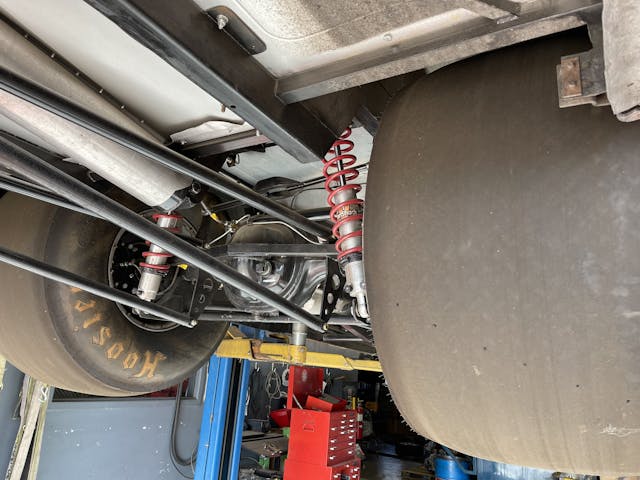
“We back-halved it and put in 14-in wide slicks. We built a fuel injection system and ran methanol. Then we built a stroker for it and had a custom roller cam made. It started making serious horsepower.”
The Flash, meanwhile, would ultimately run in the 9.70s in the mid-1980s at Firebird Raceway in Idaho, its quickest ET before on a naturally aspirated motor. And that was with Hines lifting three times because the car got loose. He got booted, though, because the car had been safety-certified to 9.90.
World’s fastest Cadillac
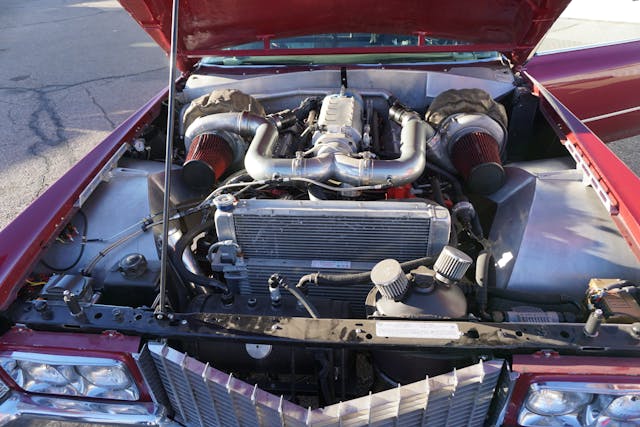
That brings us to today, with Hines planning to run a very heavy car with a very powerful twin-turbo engine. As mentioned, CAD Company built the twin-turbo Cadillac engines for the 415-mph Spectre Speedliner. Amir Rosenbaum, founder of Spectre Performance, an air intake maker, commissioned CAD Company to build the engines for his streamliner running in the Unlimited Blown Gas Streamliner (A/BGS and AA/BGS) classes.
There was a 484 cu.-in. 472 for the A class and a stroker 500 (529 cu. in.) for AA. The car ultimately broke the record with the 484 when the 529 tossed a valve.
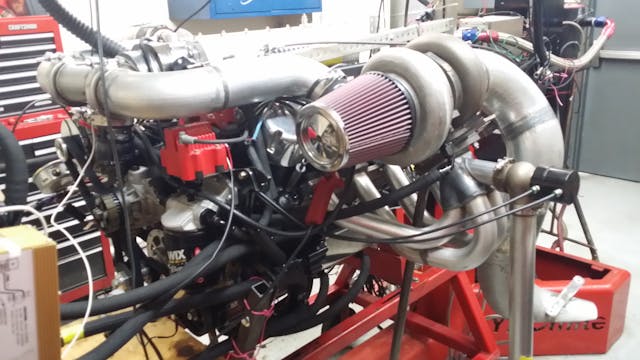
“We started with a junkyard core and modified from there,” says Hines. “What shocks people was that we were running the factory block, factory heads, factory cast crank and not running a roller cam. We didn’t even run a harmonic balancer. The heads were ported out, and we were using aftermarket rods, pistons and roller rocker arms.”
Under pressure
Going back to the “What if?” inspiration that sparked the Flash Cadillac in the first place, Hines was looking for something to do with extra engines he’d built for the Bonneville effort. “We decided to put one in the Flash,” says Hines.

The twin-turbo engine, which could make about 2000 horsepower in the Speedliner, uses a FAST fuel injection system and CAD Company’s own aluminum heads. Prep for the Flash’s enormous jump in power included adding reinforcing the chassis with added 2/3-inch steel frame rails running the length of the car, plus building a cage certified for a 7.5-second quarter-mile run. The engine was set back about six inches, and the car has a Chris Alston’s Chassisworks front end with rack and pinion steering. The rear houses a Strange ring gear with 40-spline axles.
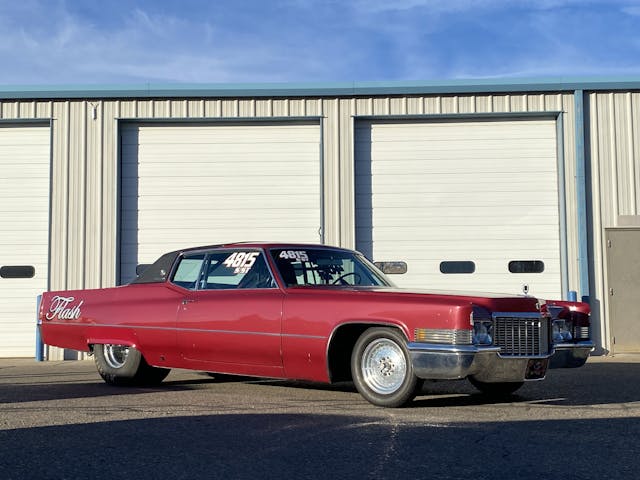
Oddly enough, the Flash Cadillac now looks closer to stock than before, because with the new turbo motor, there is no need for a hood scoop to feed a tunnel ram intake. The new stock-style hood is fiberglass, as are both chromed bumpers. The parachute cannon is hidden behind the drop-down license plate, and the car has wheelie bars. The car retains its original glass, power door windows, tilt steering column, most of the factory dash, and even the fender skirts.
Cadillac engines for everything!
While can expect to see more of Flash Cadillac in the near future, Hines remains focused on supplying customers with 472/500 engines and swaps, including putting these later engines into earlier Cadillacs.
“We get a lot of street guys and tractor pullers, and some airboat racers in Florida,” he says. “Some just want cruisers with more power.”

When Flash Cadillac shows up at the track again, it’s likely to be behind the tow vehicle Hines used 20 years ago, a 1965 Cadillac Fleetwood 75 factory limo. He bought the extra-long Caddy in 1979 and replaced its 429 with the more modern 472. In early 2021, he woke the limo from a 15-year sleep in a hay barn, cleaned it up, and dropped in a 540 cu-in stroker. He plans to add fuel injection and disc brakes.
We wonder if Hines might get his imagination spinning again and try that one on the strip. It’s a “weighty” question.


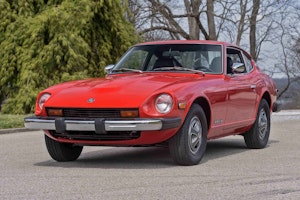
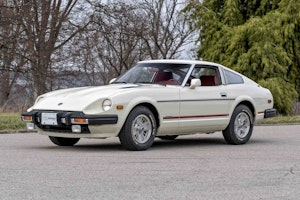
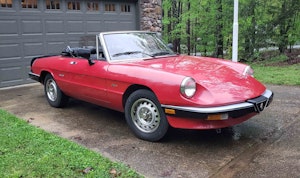

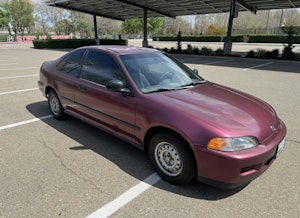


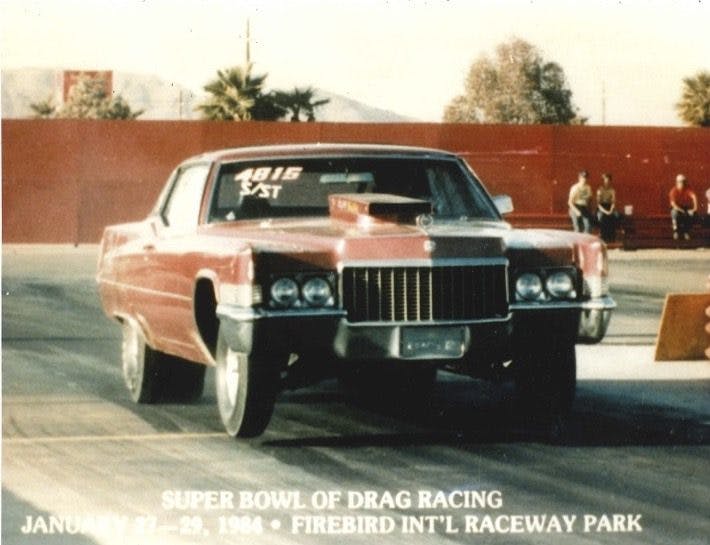
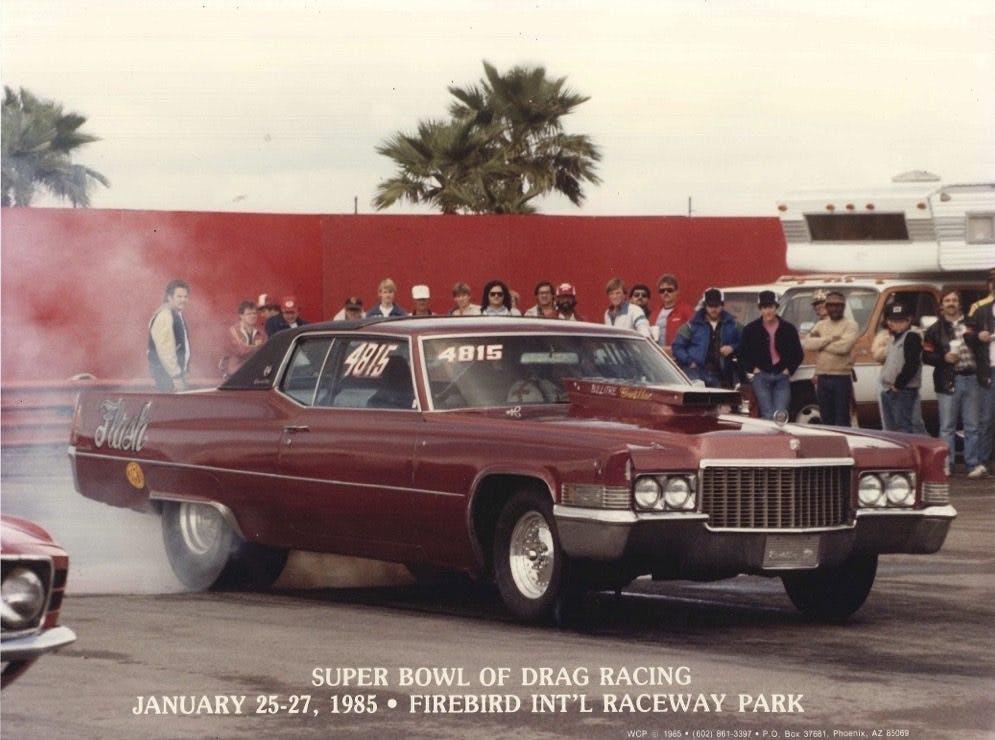

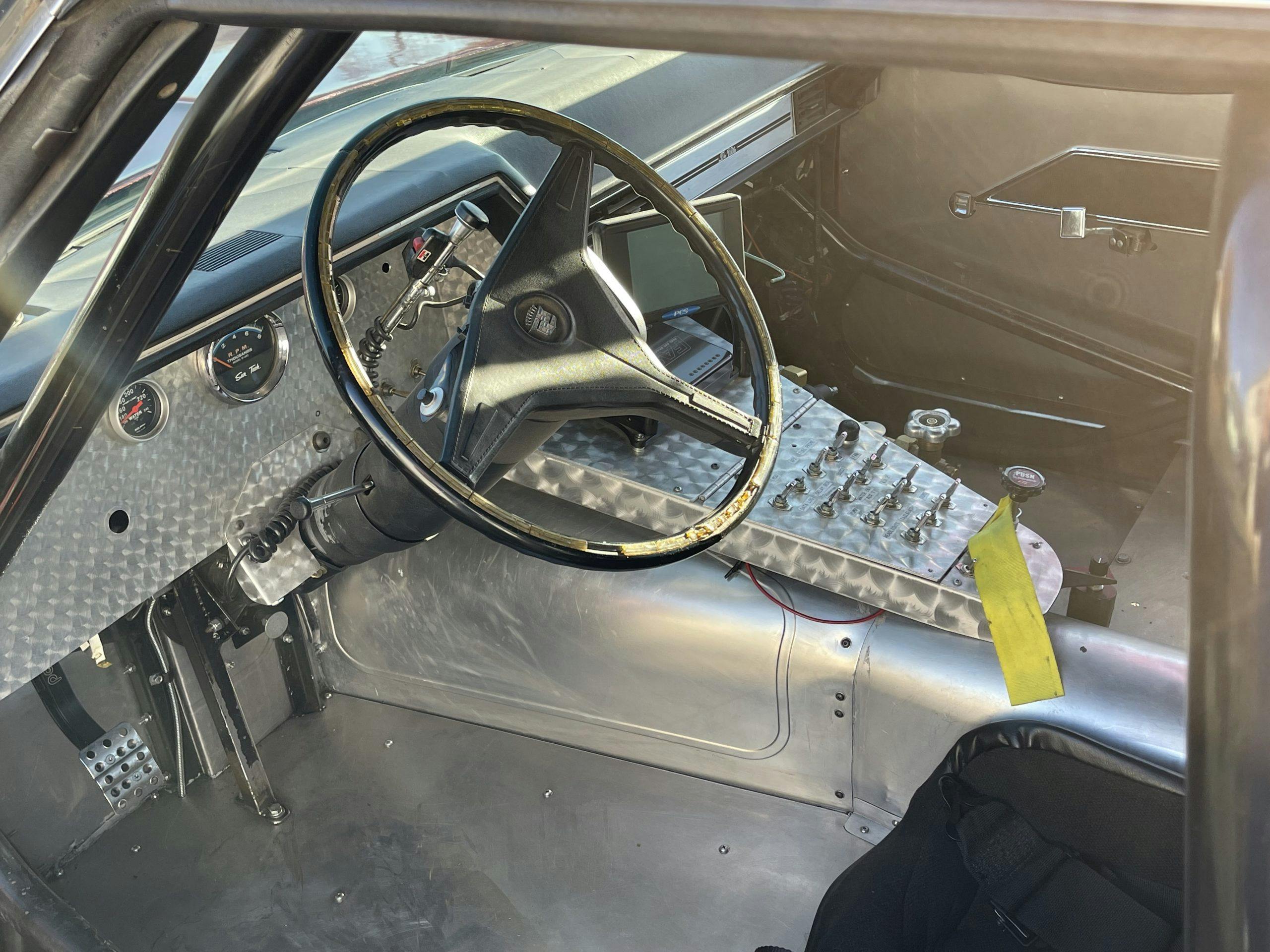
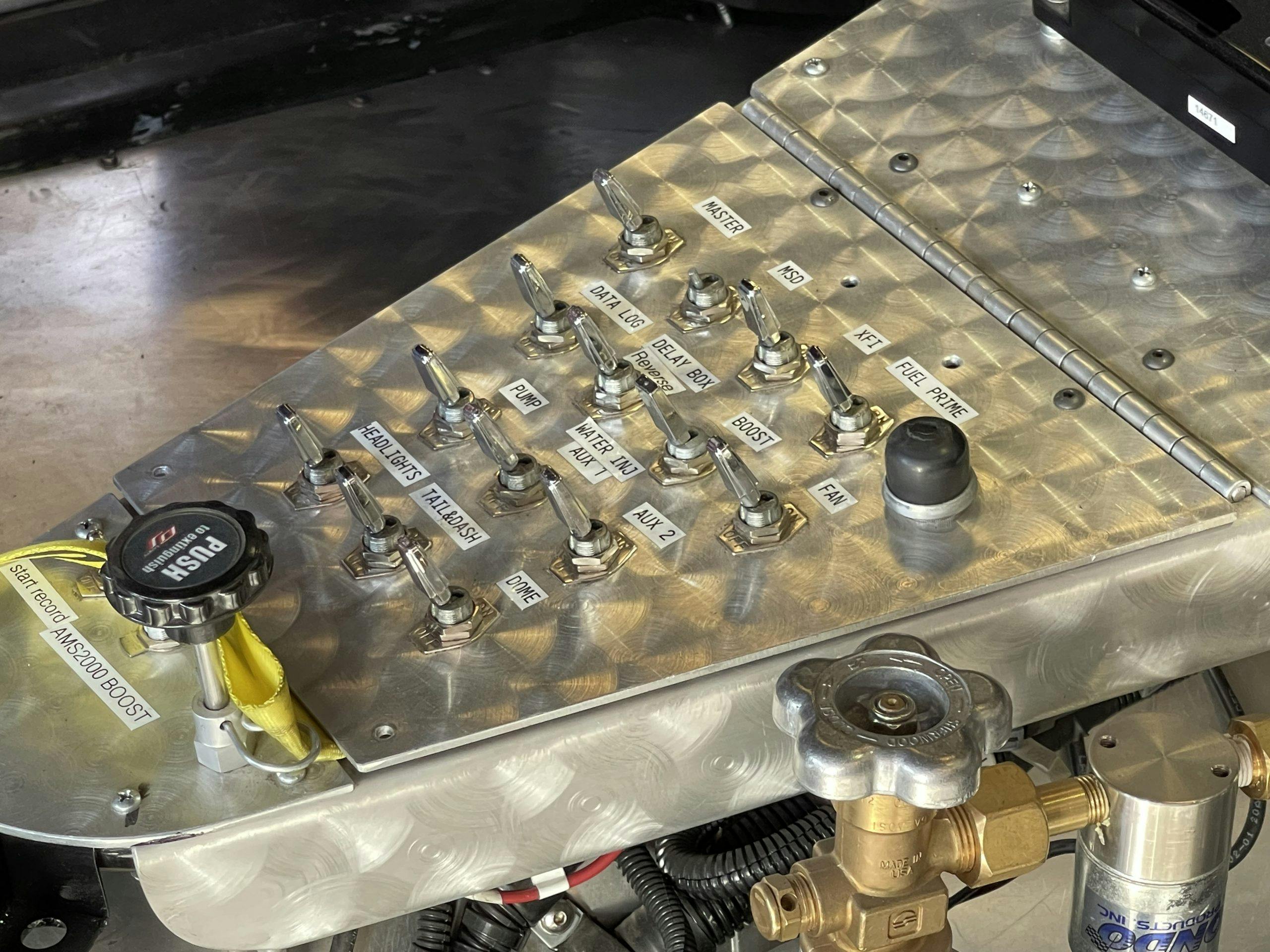

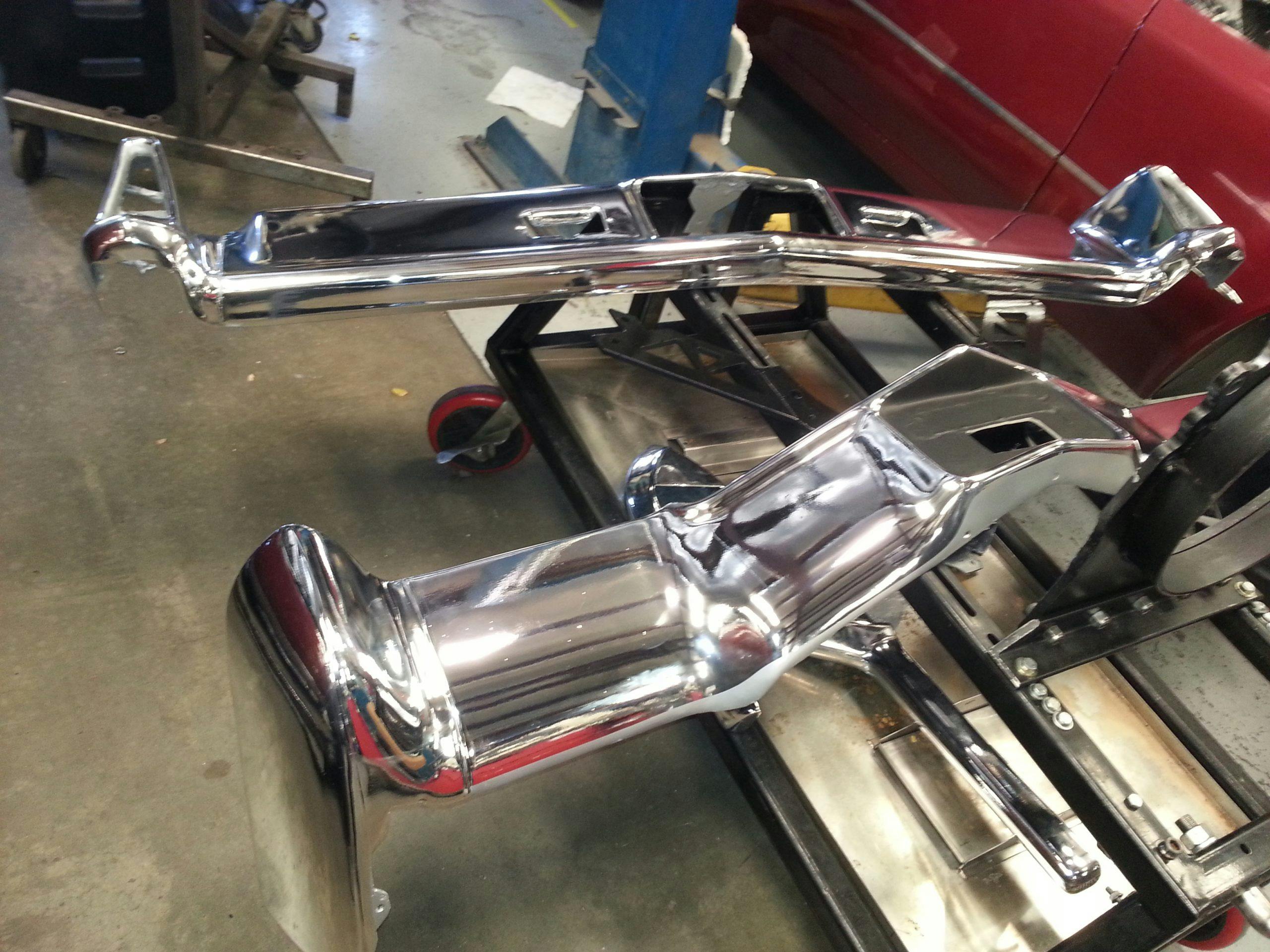
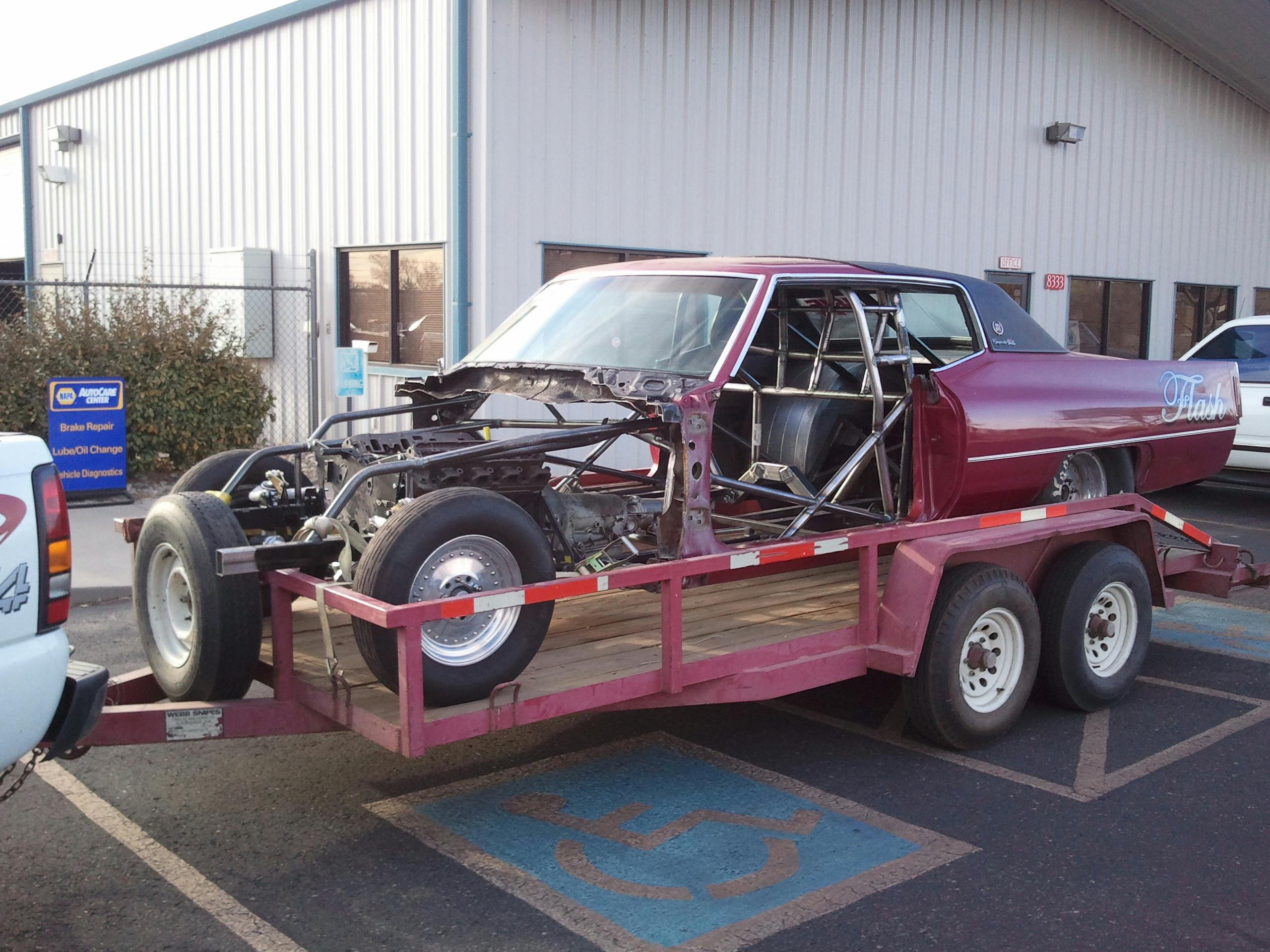
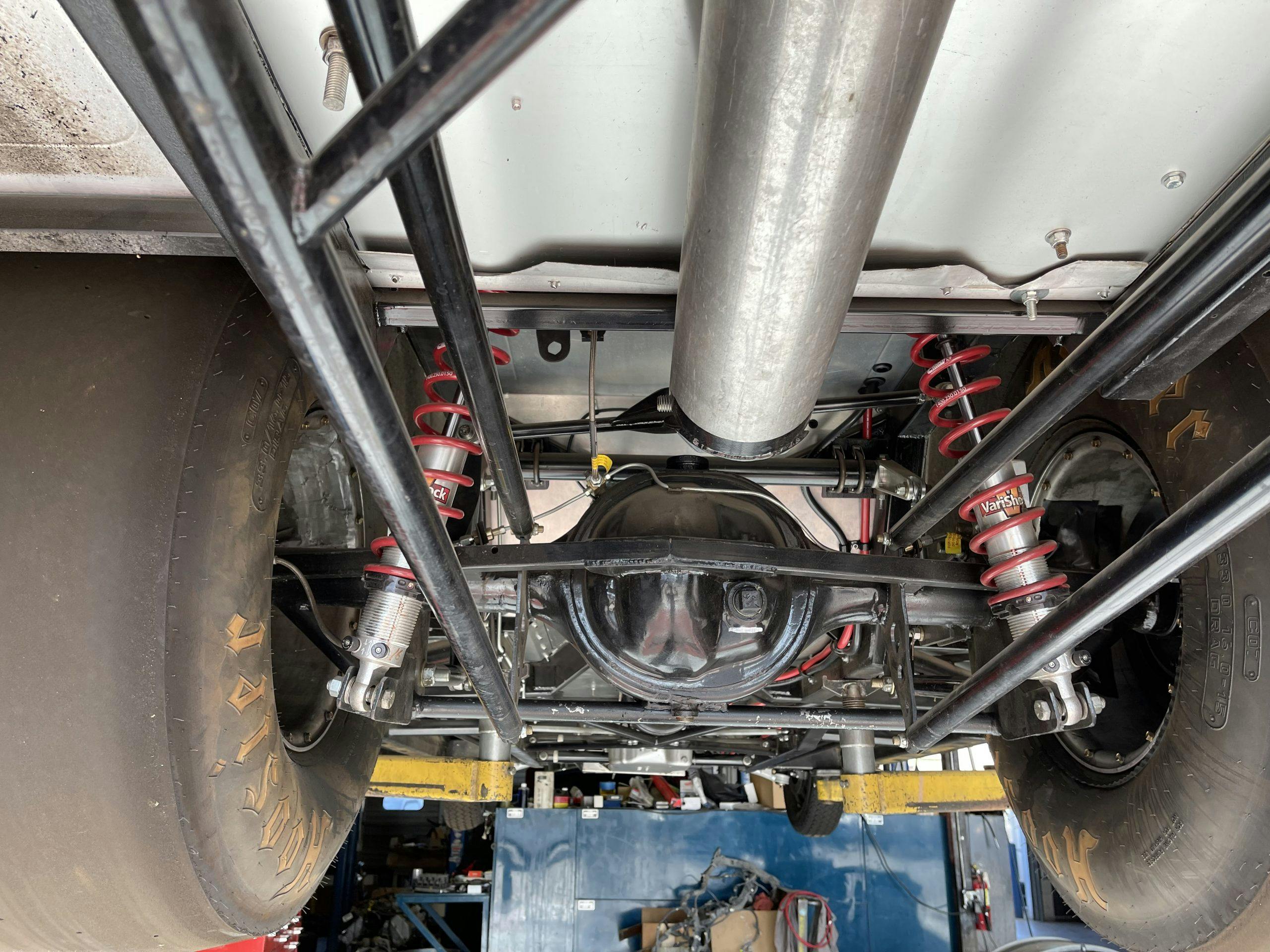
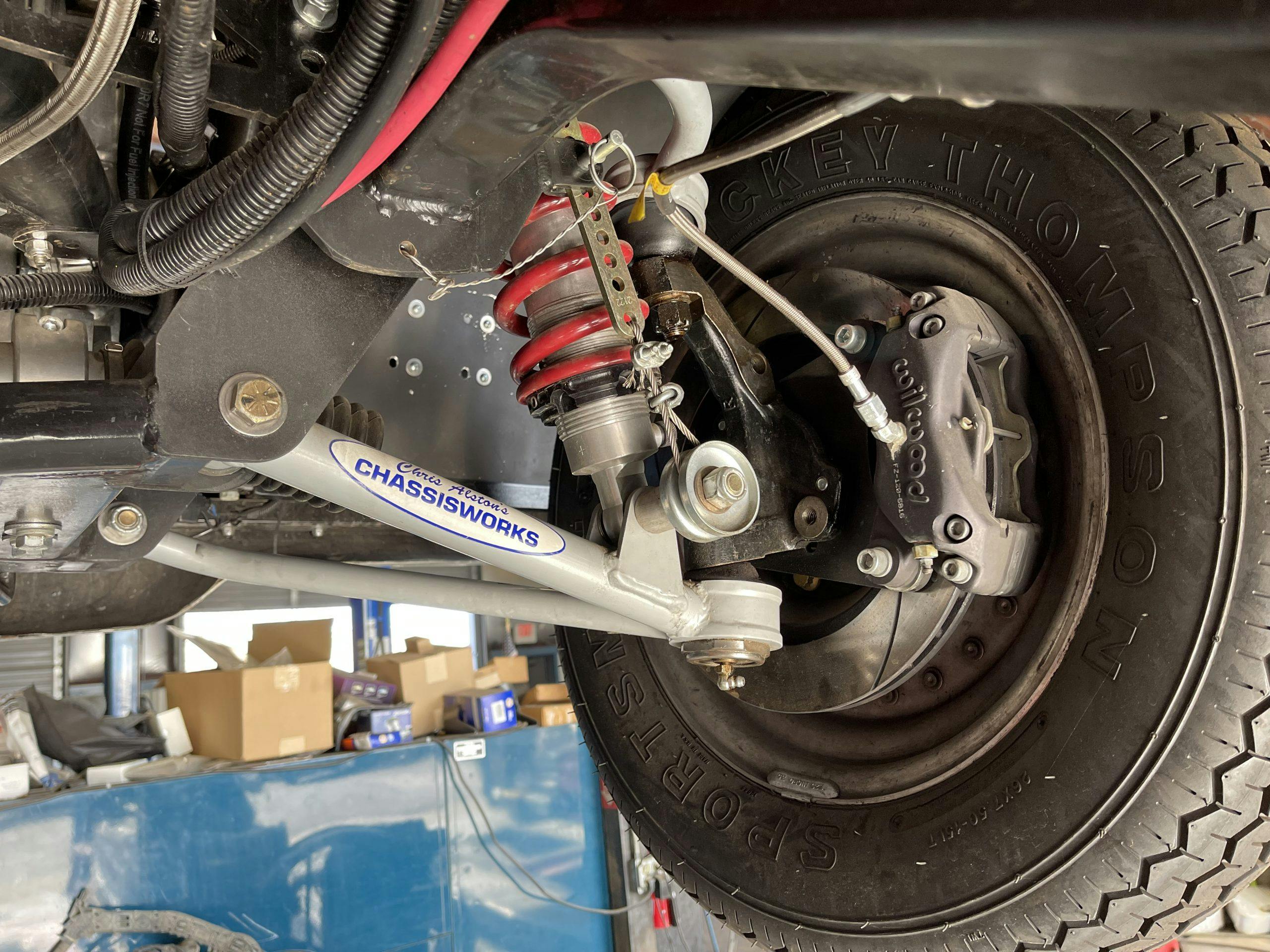
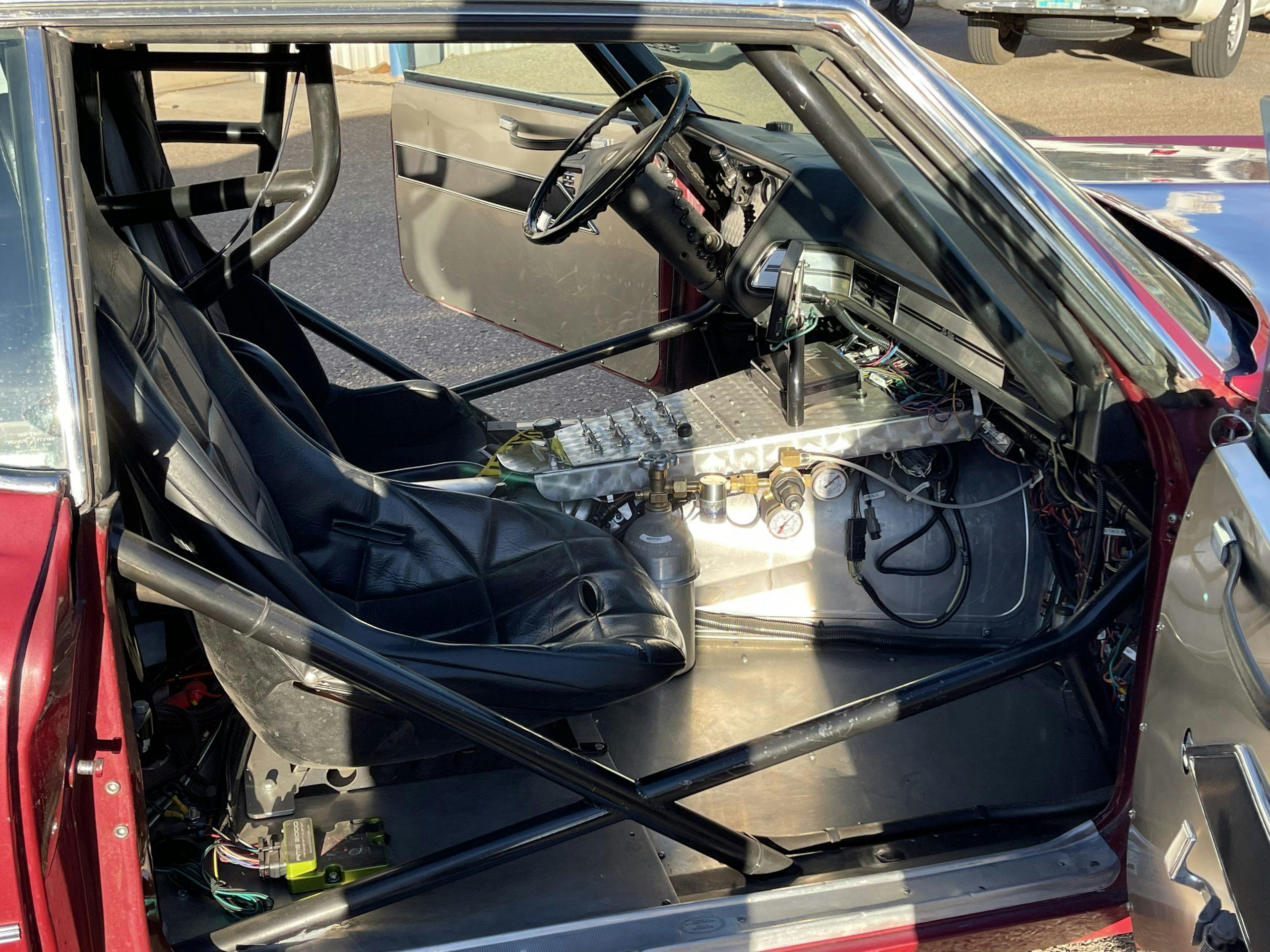






















Awesome ! Love those caddy 500 engines !
I used to see Mr Hines run Flash at the Albuquerque Dragway. Watching it fly through the top end was magic.
At the time, I recall it running what looked like a hand fabricated tunnel ram and it had a full interior. I’m not sure whether it ever showed up on South Eubank.
It remains one of the coolest cars I’ve ever seen.